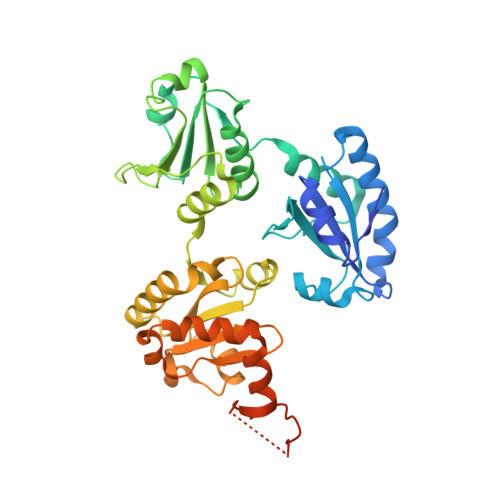Zinc regulates ERp44-dependent protein quality control in the early secretory pathway.
Watanabe, S., Amagai, Y., Sannino, S., Tempio, T., Anelli, T., Harayama, M., Masui, S., Sorrentino, I., Yamada, M., Sitia, R., Inaba, K.(2019) Nat Commun 10: 603-603
- PubMed: 30723194
- DOI: https://doi.org/10.1038/s41467-019-08429-1
- Primary Citation of Related Structures:
5XWM - PubMed Abstract:
Zinc ions (Zn 2+ ) are imported into the early secretory pathway by Golgi-resident transporters, but their handling and functions are not fully understood. Here, we show that Zn 2+ binds with high affinity to the pH-sensitive chaperone ERp44, modulating its localization and ability to retrieve clients like Ero1α and ERAP1 to the endoplasmic reticulum (ER). Silencing the Zn 2+ transporters that uptake Zn 2+ into the Golgi led to ERp44 dysfunction and increased secretion of Ero1α and ERAP1. High-resolution crystal structures of Zn 2+ -bound ERp44 reveal that Zn 2+ binds to a conserved histidine-cluster. The consequent large displacements of the regulatory C-terminal tail expose the substrate-binding surface and RDEL motif, ensuring client capture and retrieval. ERp44 also forms Zn 2+ -bridged homodimers, which dissociate upon client binding. Histidine mutations in the Zn 2+ -binding sites compromise ERp44 activity and localization. Our findings reveal a role of Zn 2+ as a key regulator of protein quality control at the ER-Golgi interface.
- Institute of Multidisciplinary Research for Advanced Materials, Tohoku University, Sendai, 980-8577, Japan.
Organizational Affiliation:


















